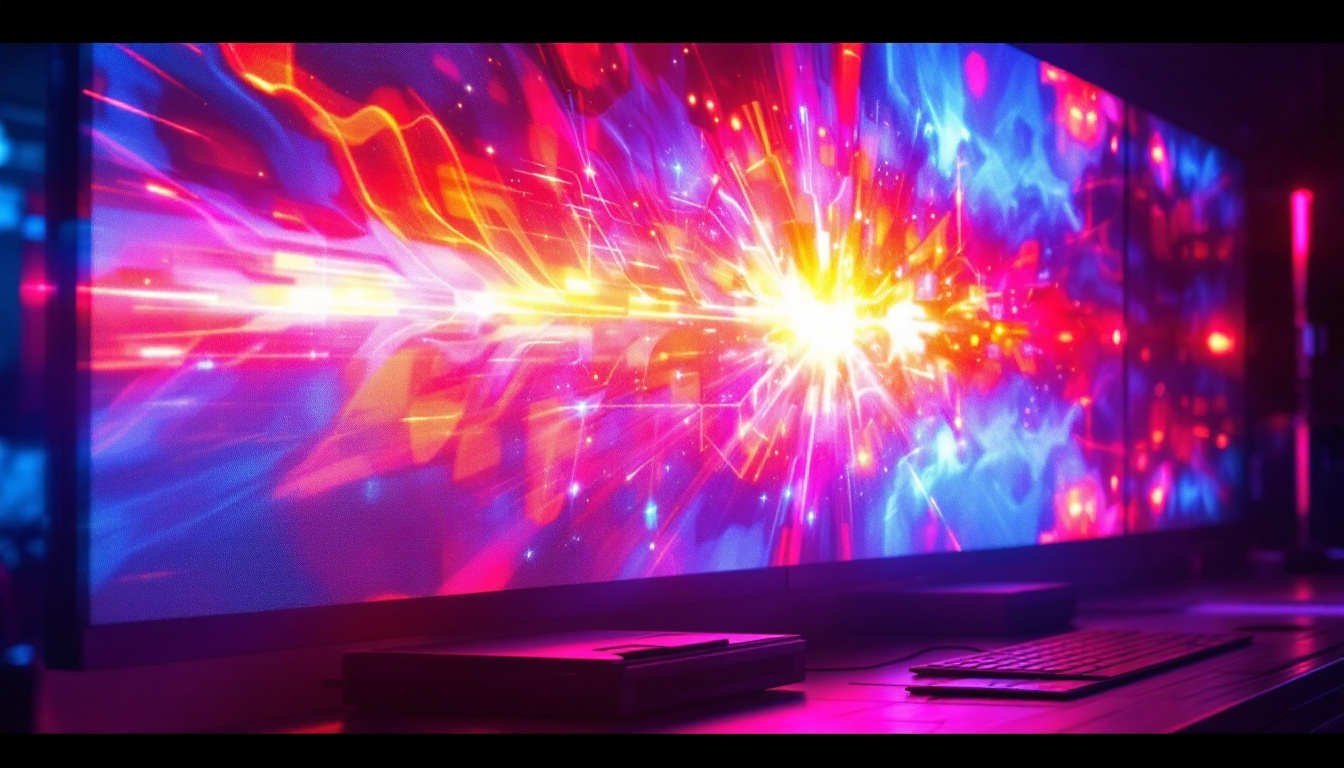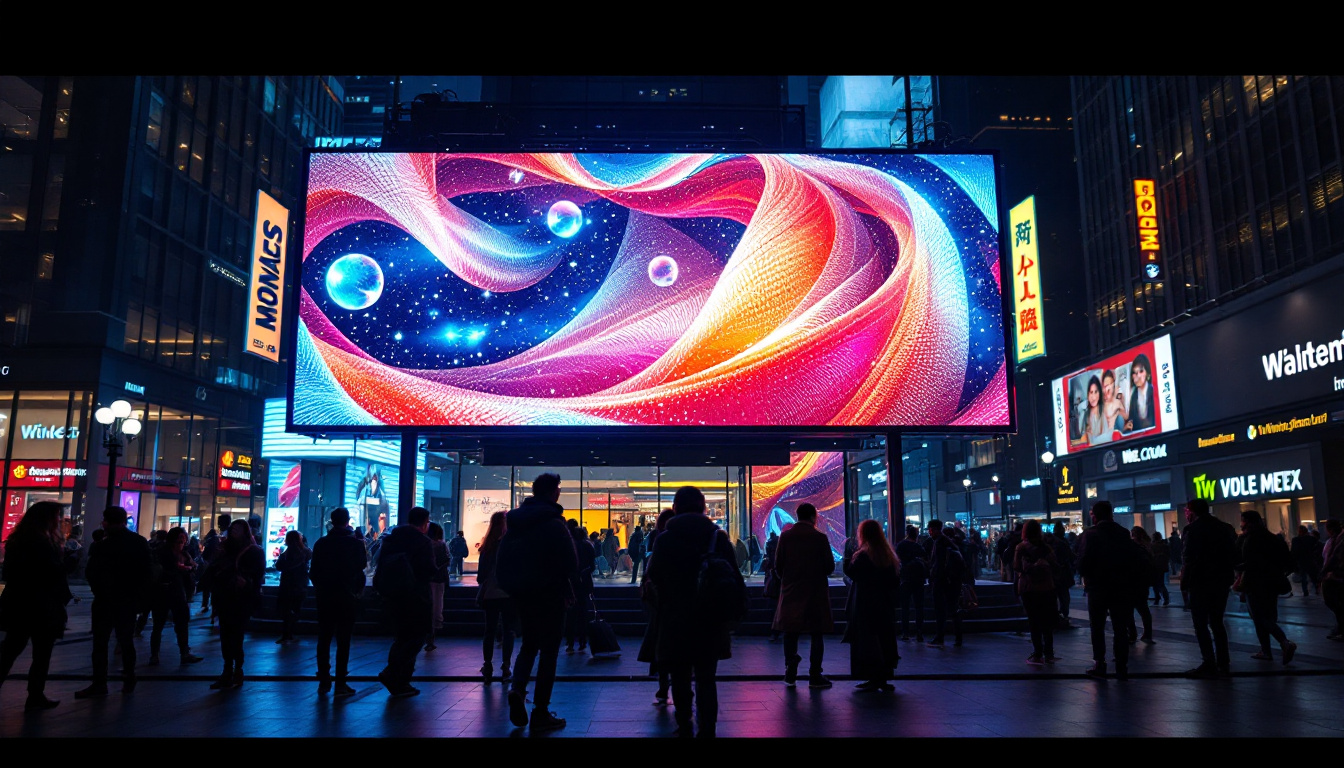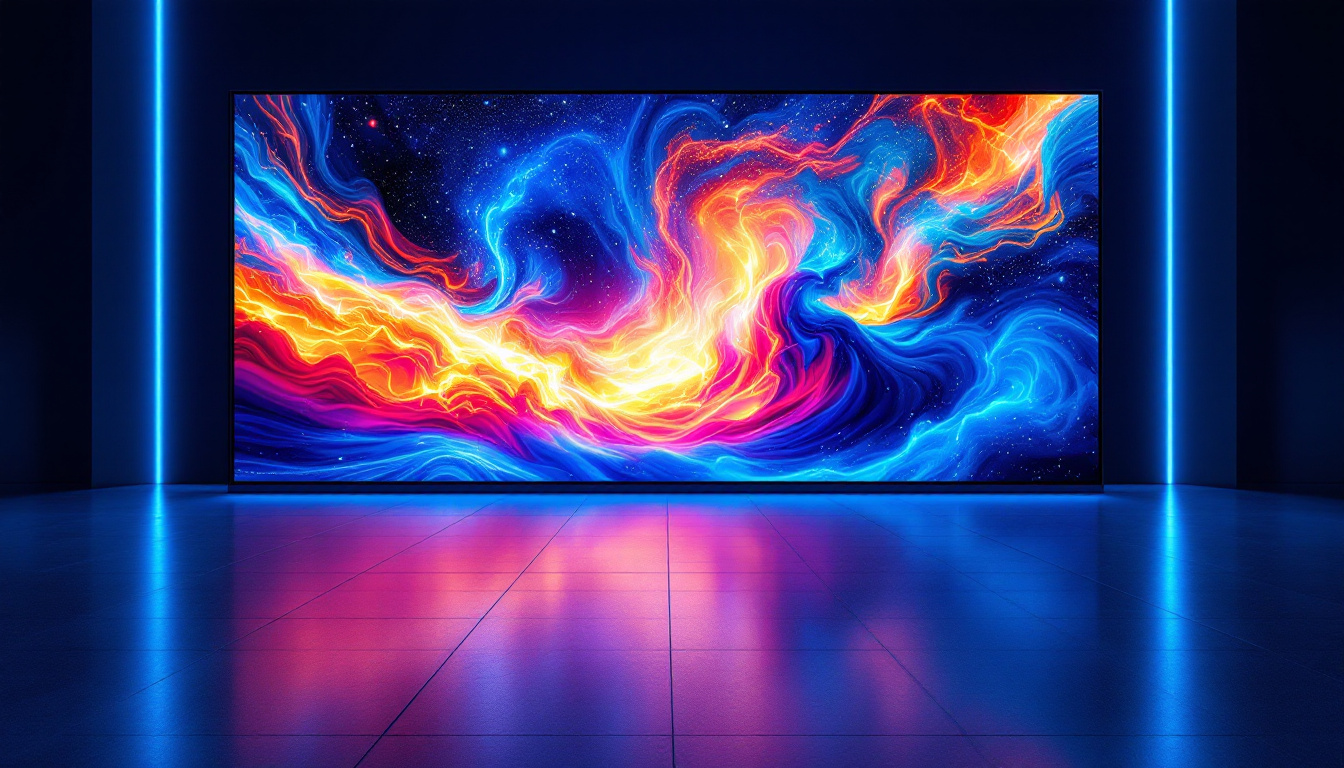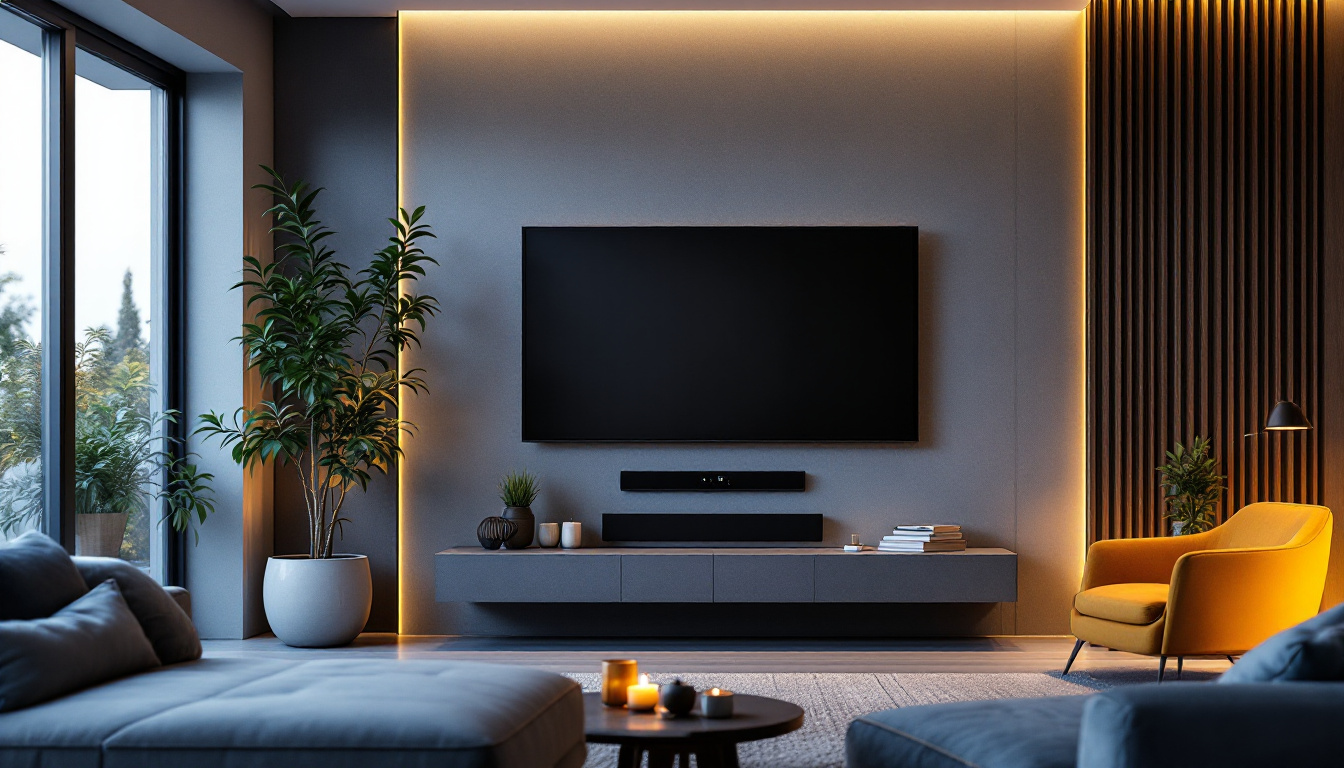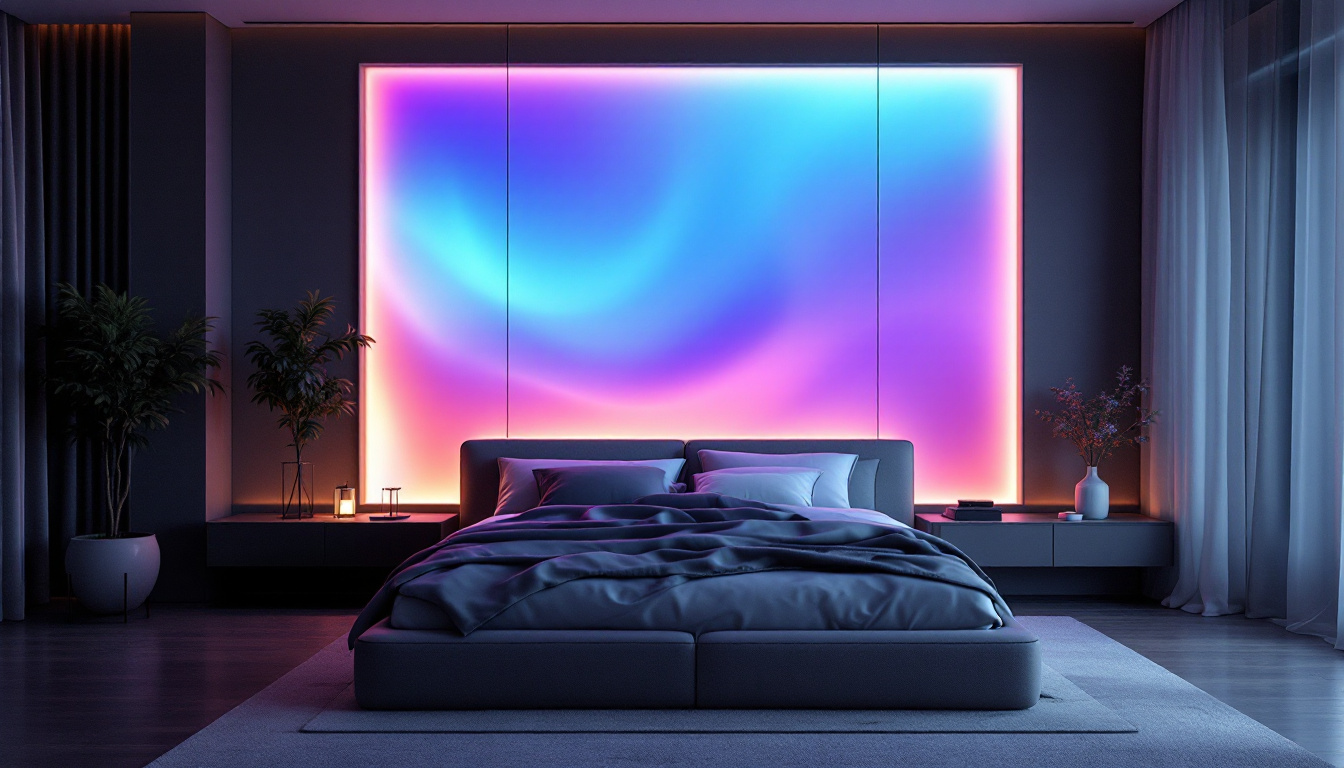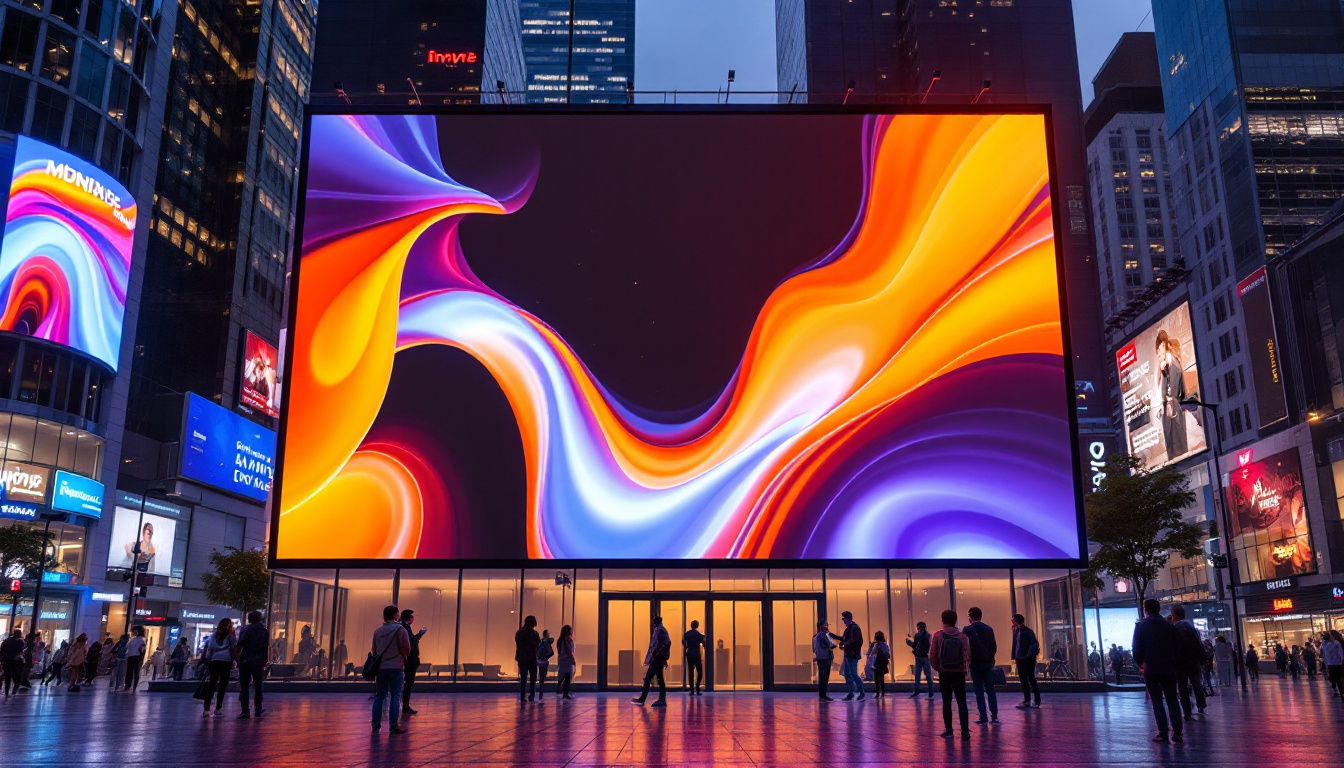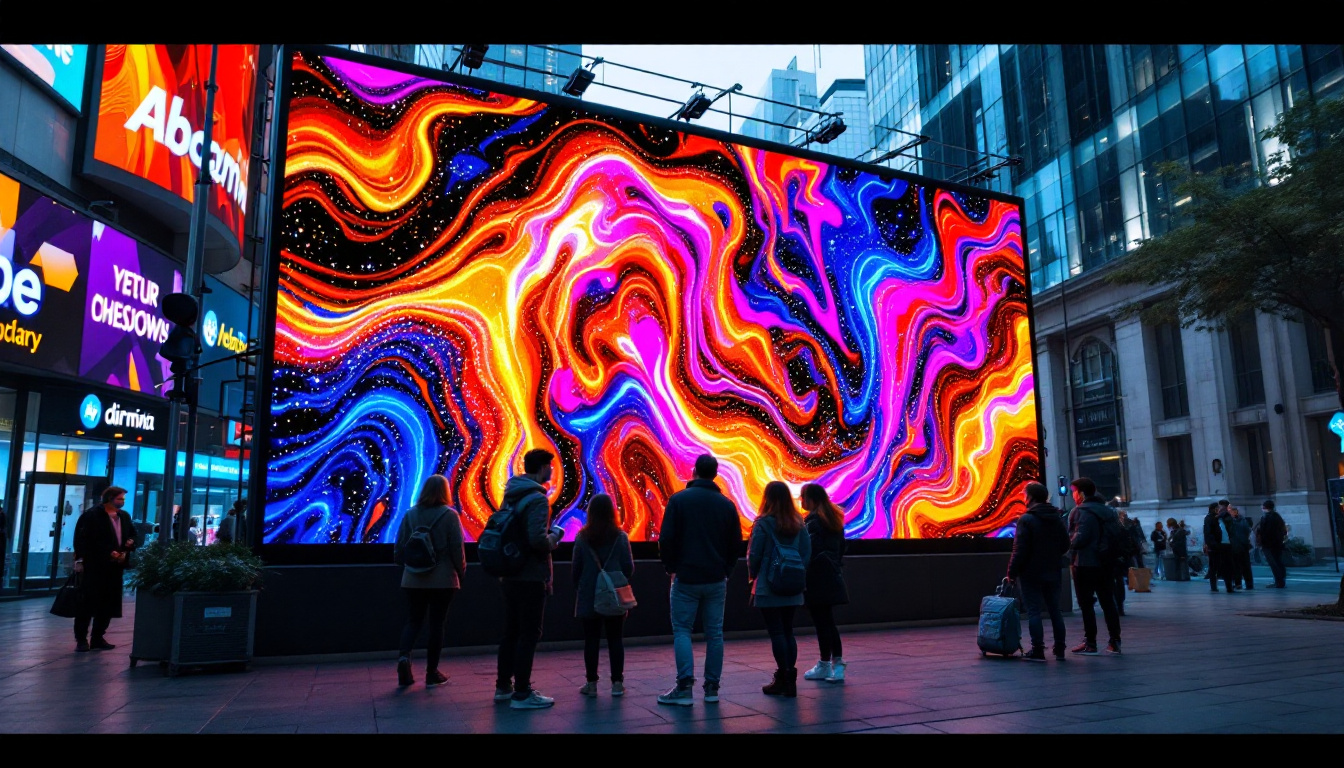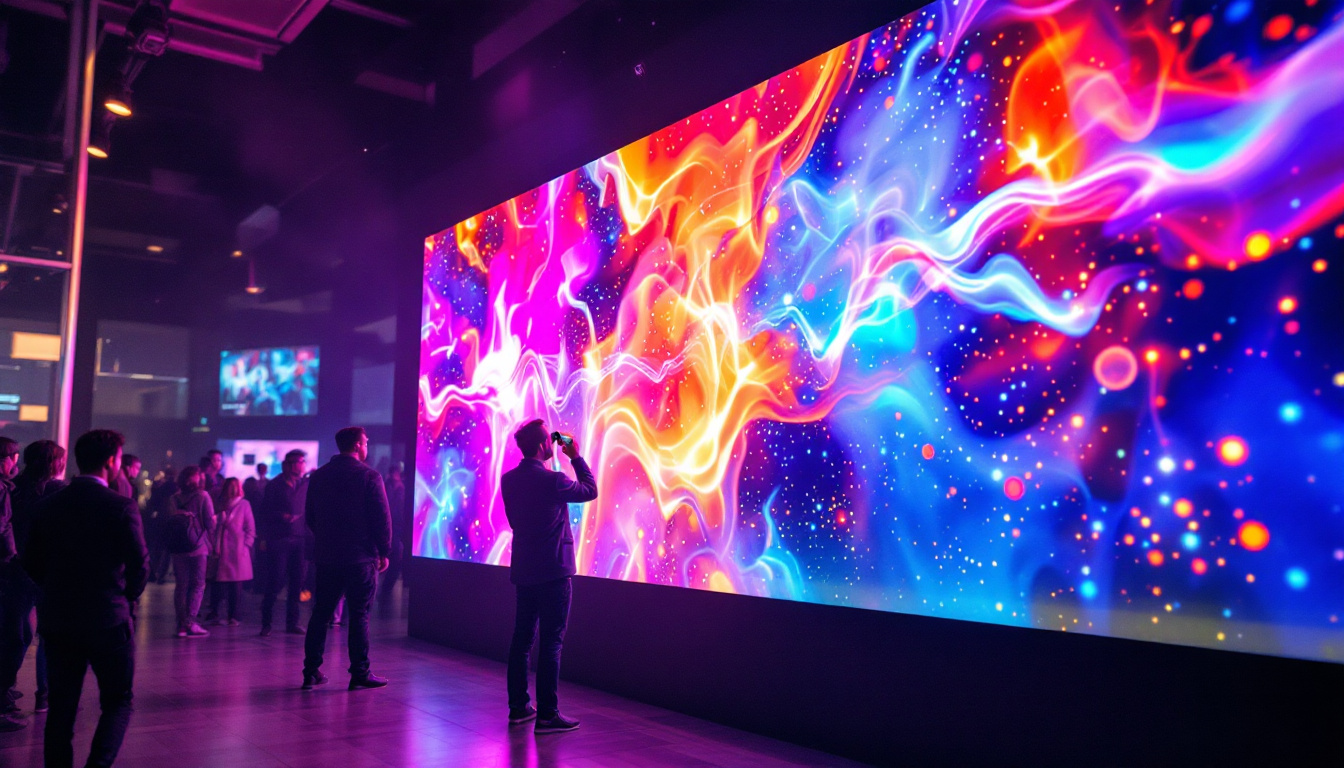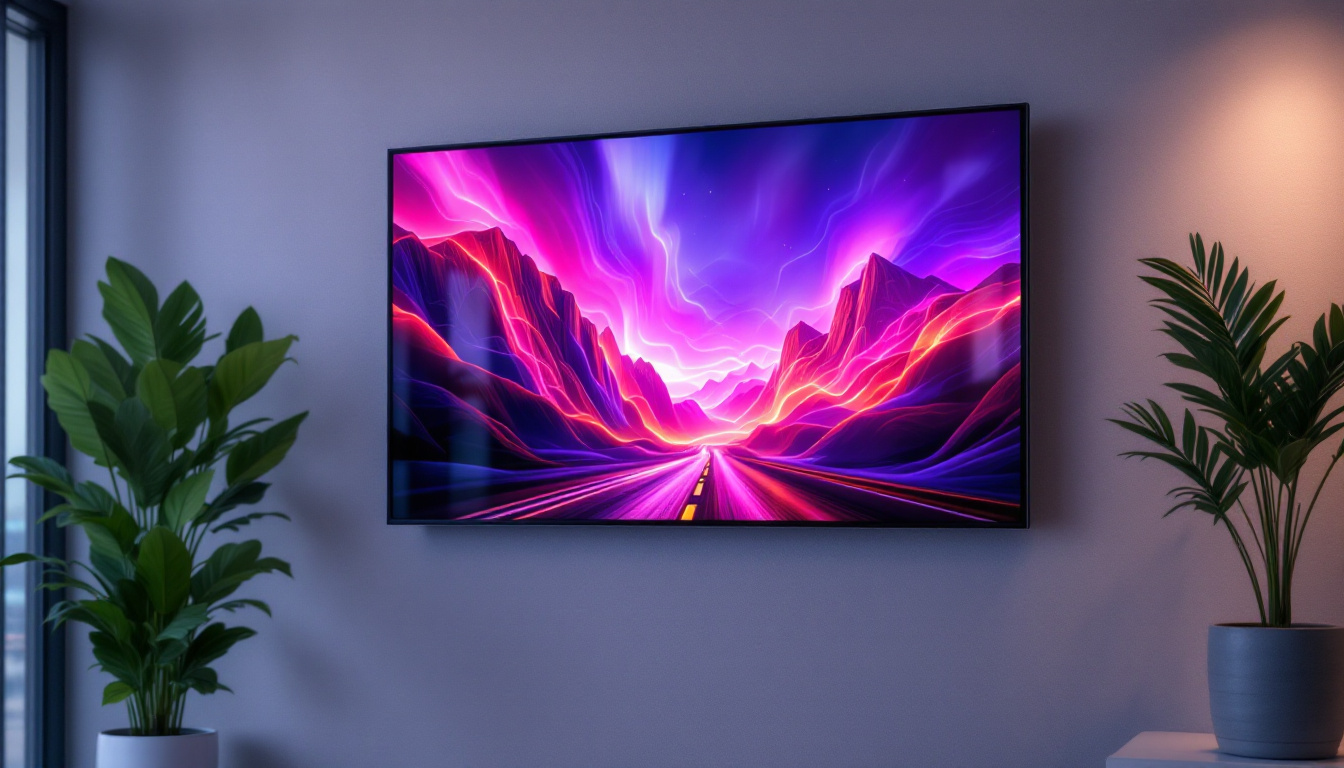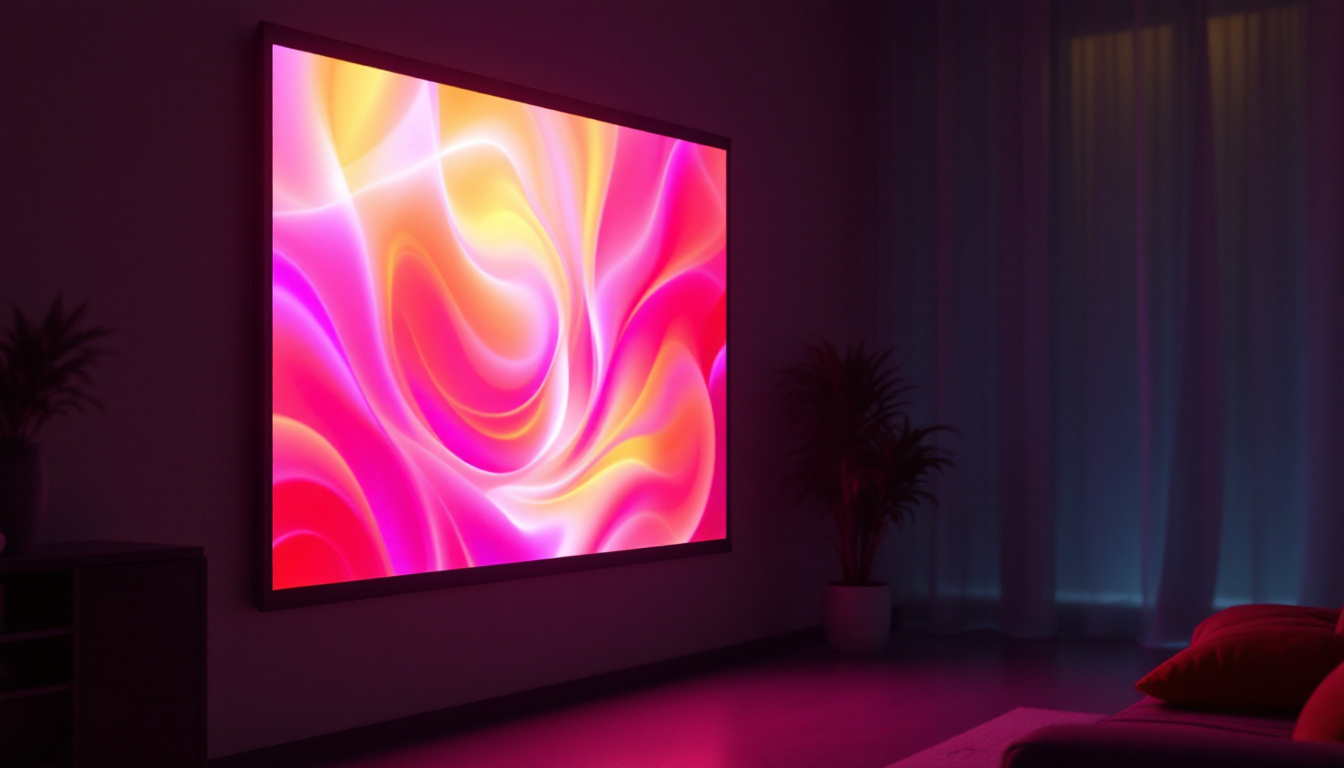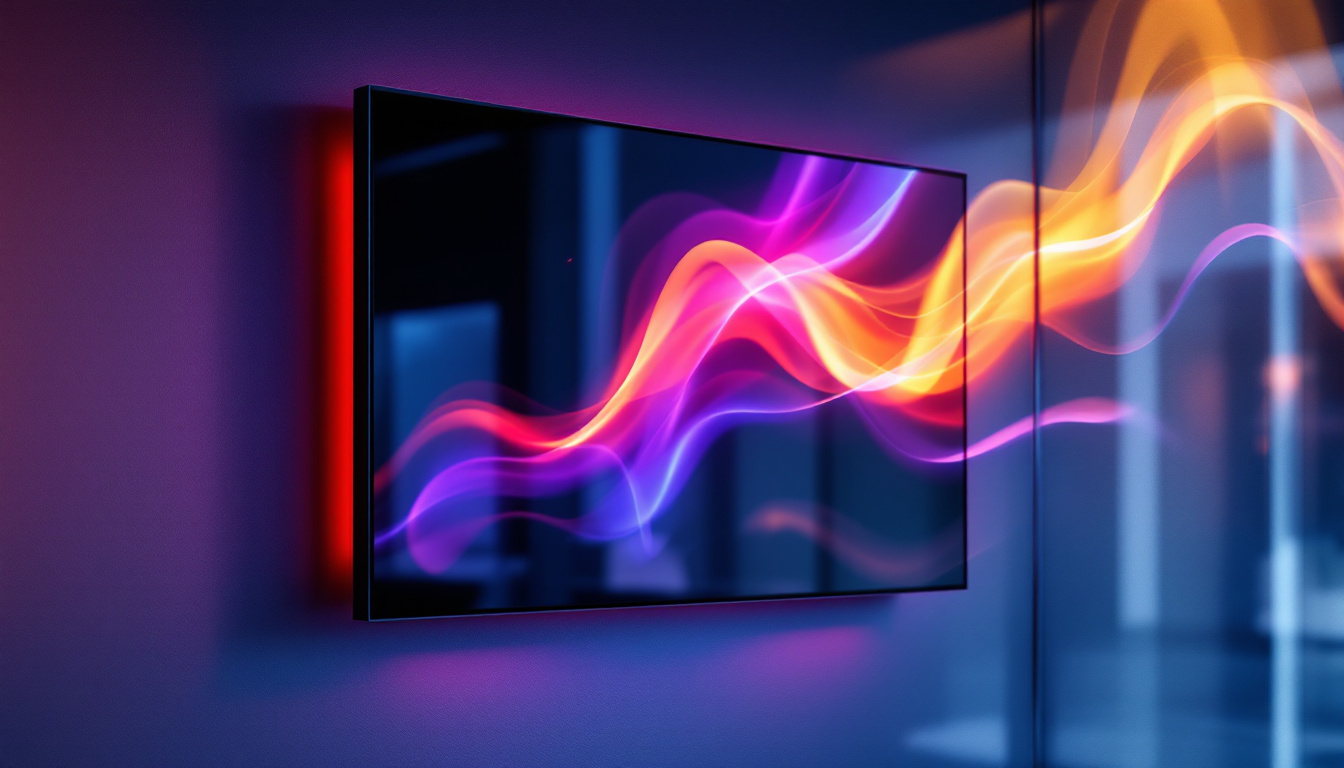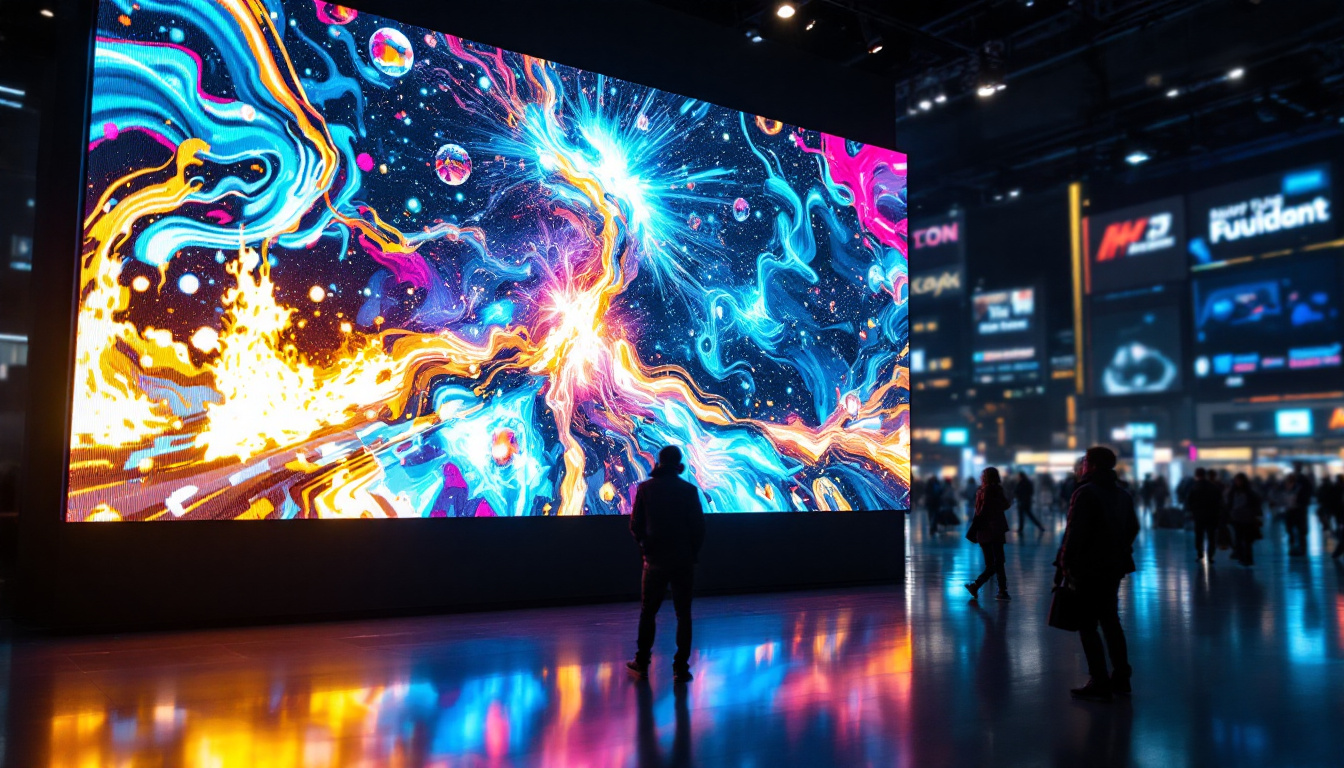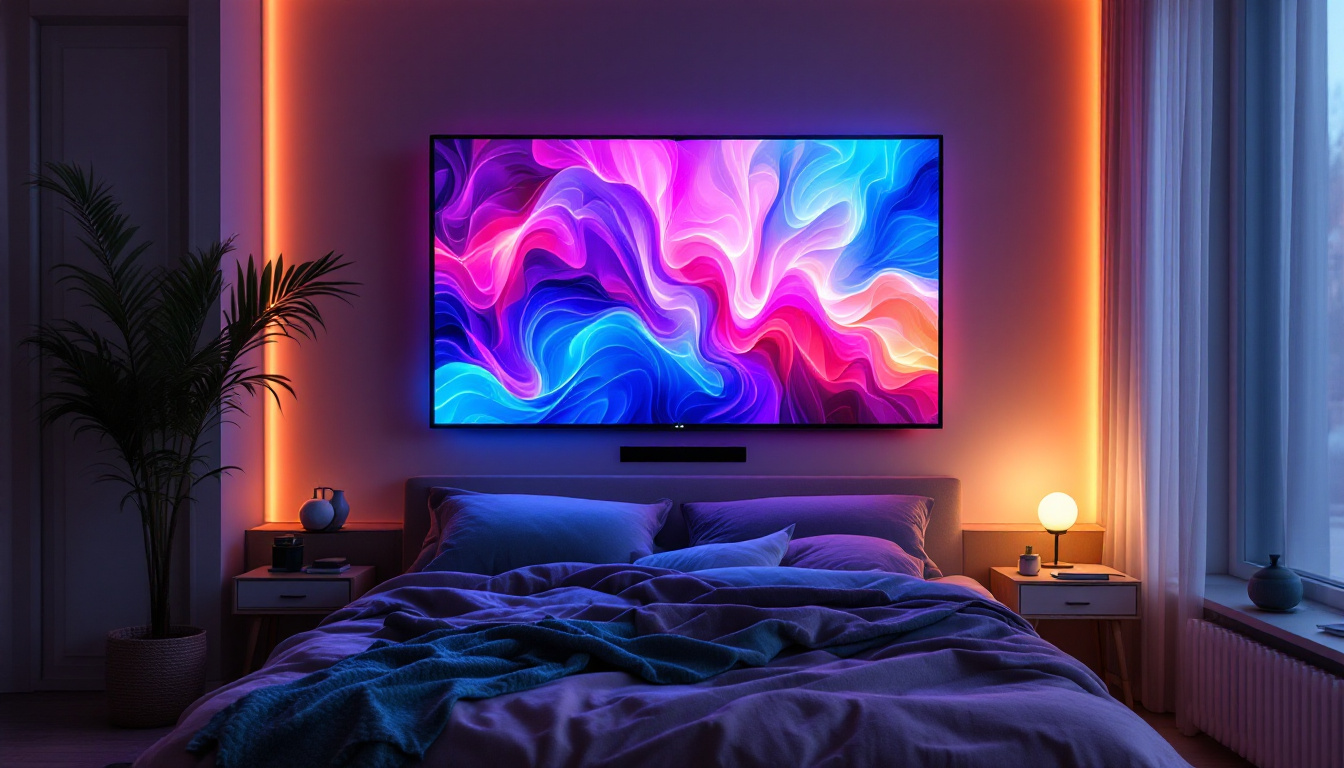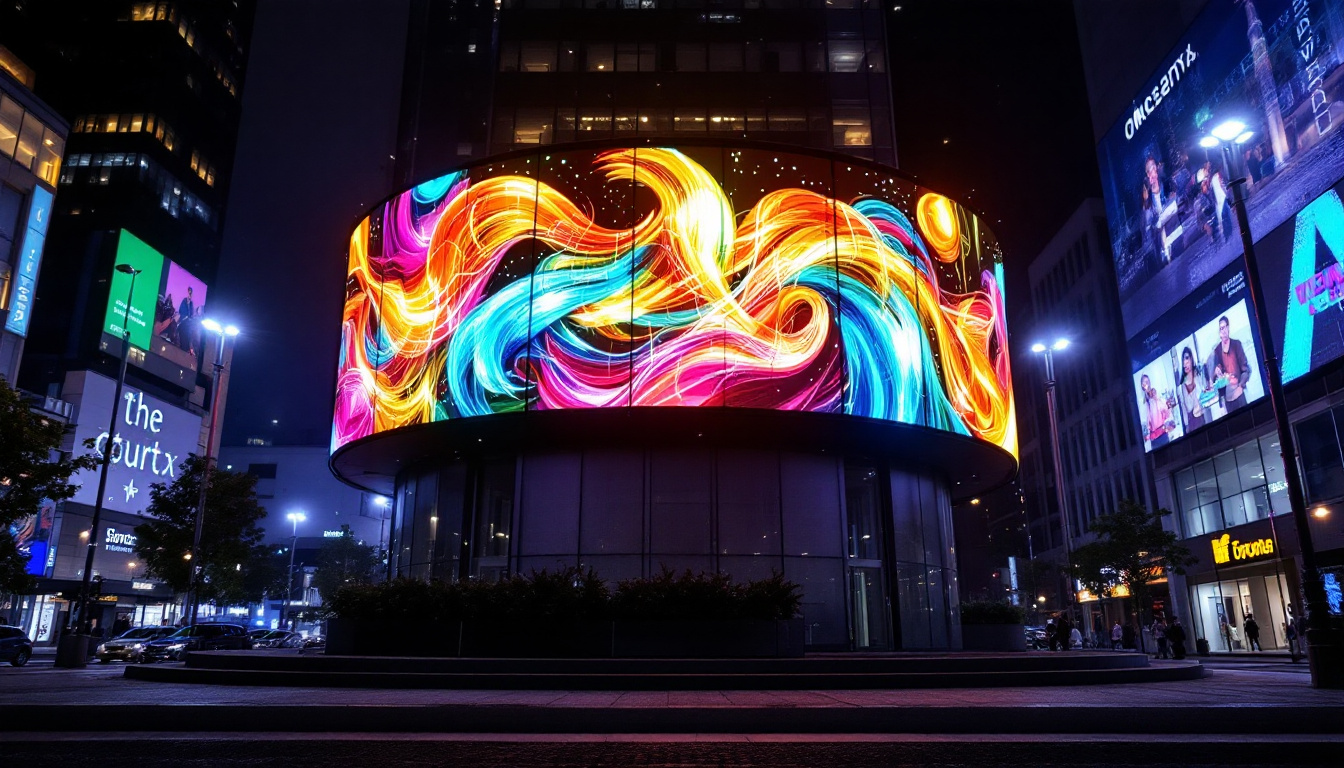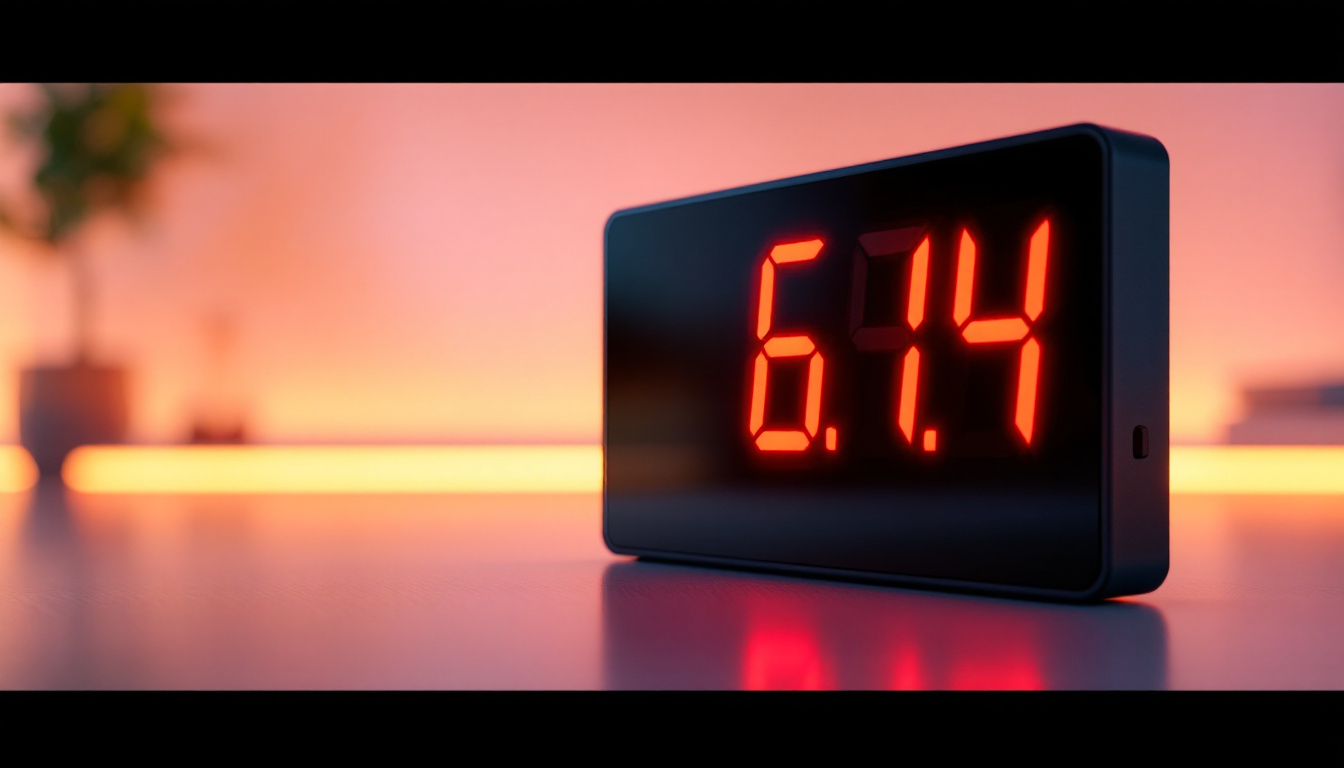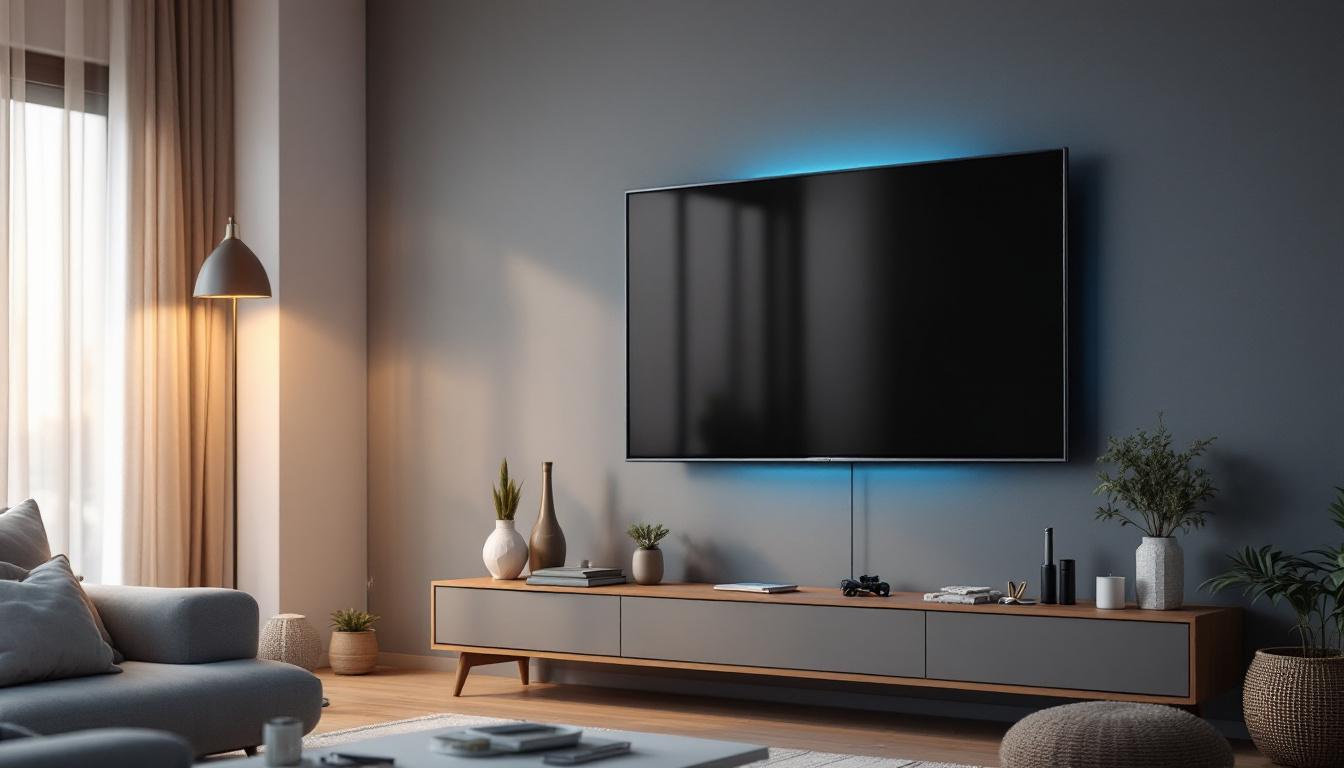The contrast ratio is a fundamental aspect of LED displays that significantly affects the quality of the viewing experience. Understanding this concept is crucial for anyone looking to purchase a new television, monitor, or any other display technology. This article delves into what contrast ratio is, how it is measured, and its implications for LED displays.
Understanding Contrast Ratio
At its core, contrast ratio refers to the difference in luminance between the brightest white and the darkest black that a display can produce. It is typically expressed as a ratio, such as 1000:1. This means that the brightest white is 1000 times brighter than the darkest black. A higher contrast ratio generally indicates a more vibrant and dynamic image. This concept is crucial not only for televisions and computer monitors but also for smartphones and tablets, where users expect crisp visuals and rich colors that pop off the screen.
In addition to enhancing the visual appeal, contrast ratio can also affect the usability of a display in various lighting conditions. For example, a screen with a high contrast ratio can be easier to read in bright environments, as the stark difference between light and dark makes text stand out more clearly. This is particularly beneficial for users who spend extended periods looking at screens, as it can reduce eye strain and fatigue, making for a more comfortable viewing experience.
The Importance of Contrast Ratio
Contrast ratio plays a pivotal role in image quality. Displays with higher contrast ratios can produce deeper blacks and more vivid colors, enhancing the overall viewing experience. This is particularly important in dark scenes or when viewing content with a lot of shadow detail. A display with a lower contrast ratio may struggle to render these details, resulting in a washed-out image. For instance, in cinematic experiences, a high contrast ratio can bring out the subtle nuances in a shadowy scene, allowing viewers to appreciate the artistry of lighting and composition.
Moreover, contrast ratio is not just a technical specification; it can significantly influence the emotional impact of visual content. In video games, for example, a high contrast ratio can create a more immersive atmosphere, making players feel more engaged in the action. Similarly, in photography, images with a rich contrast can evoke stronger emotions and draw the viewer’s eye to key elements within the frame, making the overall experience more compelling.
How Contrast Ratio is Measured
To measure contrast ratio, manufacturers typically use specific testing methods that involve displaying pure black and pure white images on the screen. The luminance of each image is measured using a device called a photometer. The ratio of these two measurements gives the contrast ratio. However, it is important to note that the conditions under which these measurements are taken can vary, leading to discrepancies between advertised and actual performance. Factors such as ambient light, the angle of view, and the specific technology used in the display (such as OLED vs. LCD) can all influence the perceived contrast ratio.
Additionally, some manufacturers may employ different methodologies or optimizations that can skew the results. For example, dynamic contrast ratios, which adjust the brightness of the backlight in real-time based on the content being displayed, can produce impressive numbers on paper but may not reflect the true performance of the display in practical scenarios. Therefore, when evaluating a display, it is essential for consumers to consider not only the stated contrast ratio but also real-world reviews and tests that provide insight into how well the display performs under typical viewing conditions.
Types of Contrast Ratios
There are generally two types of contrast ratios that consumers encounter: static contrast ratio and dynamic contrast ratio. Understanding the differences between these two can help in making informed purchasing decisions.
Static Contrast Ratio
The static contrast ratio is the most commonly referenced type. It measures the contrast ratio of a display when it is set to a fixed brightness level. This ratio remains constant regardless of the content being displayed. Static contrast ratios are crucial for assessing the overall performance of a display, as they provide a clear indication of how the screen will perform under normal viewing conditions.
Dynamic Contrast Ratio
Dynamic contrast ratio, on the other hand, refers to the contrast ratio that can be achieved by adjusting the brightness of the backlight in response to the content being displayed. This means that when a darker scene is shown, the backlight can dim, allowing for deeper blacks, while brighter scenes can be enhanced by increasing the backlight. While dynamic contrast ratios can appear impressive on paper, they may not always reflect real-world performance, as they often rely on the display’s ability to adjust to varying content.
Factors Affecting Contrast Ratio
Several factors influence the contrast ratio in LED displays, including the type of display technology, ambient lighting conditions, and the quality of the display panel itself. Each of these factors can significantly affect how contrast is perceived by the viewer.
Display Technology
Different display technologies have inherently different contrast ratios. For instance, OLED displays are known for their exceptional contrast ratios due to their ability to turn off individual pixels, resulting in true blacks. In contrast, traditional LCD displays, which rely on backlighting, may struggle to achieve the same level of contrast, as some light can bleed through even in dark scenes.
Ambient Lighting Conditions
The environment in which a display is viewed can also impact its perceived contrast ratio. In brightly lit rooms, reflections and glare can wash out the image, making it difficult to appreciate the full range of contrast. Conversely, viewing in a darkened room can enhance the contrast perception, allowing for a more immersive experience. Therefore, it is essential to consider the viewing environment when evaluating a display’s performance.
Quality of the Display Panel
The quality of the display panel itself is another critical factor. Higher-quality panels often utilize better materials and manufacturing processes, resulting in improved contrast ratios. Additionally, calibration plays a significant role; a well-calibrated display can significantly enhance its contrast performance, ensuring that colors are accurately represented and blacks appear deep and rich.
Impact of Contrast Ratio on Viewing Experience
The impact of contrast ratio on the viewing experience cannot be overstated. A higher contrast ratio often translates to a more engaging and enjoyable viewing experience, particularly for movies, video games, and high-definition content. Here are some specific areas where contrast ratio makes a difference.
Color Accuracy and Depth
Displays with higher contrast ratios tend to produce more accurate colors and greater depth. This is because the ability to render true blacks allows for a broader range of colors to be displayed. In scenes with high color saturation, the difference between light and dark areas becomes more pronounced, resulting in images that pop and appear more lifelike.
Detail in Shadows and Highlights
High contrast ratios are particularly important for maintaining detail in both shadows and highlights. In darker scenes, a display with a low contrast ratio may lose critical details, making it difficult for viewers to discern elements in the background. Similarly, bright highlights may appear washed out on displays with poor contrast, diminishing the overall impact of the scene.
Immersive Viewing Experience
Ultimately, the combination of color accuracy, detail retention, and depth contributes to a more immersive viewing experience. Whether watching a thrilling action movie or playing a visually demanding video game, a display with a high contrast ratio can transport viewers into the content, making them feel more connected to the story being told.
Choosing the Right Display Based on Contrast Ratio
When it comes to selecting a display, understanding contrast ratio is essential. However, it should not be the sole factor in the decision-making process. Here are some tips for choosing the right display based on contrast ratio.
Assessing Your Viewing Needs
Consider how you will primarily use the display. For general television viewing, a static contrast ratio of 1000:1 or higher is typically sufficient. However, for dedicated home theater setups or gaming, investing in a display with a higher contrast ratio, such as those found in OLED technology, can significantly enhance the experience.
Researching Display Models
Before making a purchase, it is advisable to research various models and read reviews. Look for information on both static and dynamic contrast ratios, as well as real-world performance assessments. This will provide a more comprehensive understanding of how the display will perform in everyday use.
Testing in Different Environments
If possible, test displays in environments similar to where they will be used. This can help gauge how ambient lighting affects the perceived contrast ratio. Many retailers have showrooms where consumers can compare different models side by side, providing a valuable opportunity to assess performance firsthand.
Future Trends in Contrast Ratio Technology
The world of display technology is constantly evolving, and advancements in contrast ratio are no exception. As manufacturers continue to innovate, several trends are emerging that may shape the future of contrast ratios in LED displays.
Advancements in OLED and MicroLED Technology
OLED technology has already set a high standard for contrast ratios, but ongoing advancements are likely to push these boundaries even further. MicroLED technology, which combines the benefits of OLED with the advantages of traditional LED, promises to deliver even better contrast ratios and brightness levels. This could lead to displays that offer true blacks and vibrant colors in any viewing environment.
Improved Calibration Techniques
As display calibration techniques improve, consumers can expect even better performance from their displays. Automated calibration systems and software are becoming more sophisticated, allowing for precise adjustments that optimize contrast ratios based on individual viewing preferences and environments.
Integration of AI and Machine Learning
Artificial intelligence and machine learning are starting to play a role in display technology. These advancements could lead to displays that automatically adjust their contrast ratios based on the content being viewed and the surrounding environment. Such innovations could enhance the overall viewing experience by ensuring optimal performance without requiring manual adjustments.
Conclusion
Understanding contrast ratio is vital for anyone looking to invest in a new LED display. By grasping the nuances of static and dynamic contrast ratios, as well as the factors that influence them, consumers can make informed decisions that enhance their viewing experience. As technology continues to evolve, the future of contrast ratios in displays promises to deliver even more impressive performance, making it an exciting time for both consumers and industry professionals alike.
Explore the Future of Contrast with LumenMatrix
Ready to experience the ultimate in contrast ratio and LED display technology? LumenMatrix is at the forefront of innovation, offering a diverse range of LED display solutions that bring your visual content to life. Whether you need an Indoor LED Wall Display for your business, an Outdoor LED Wall Display for advertising, or any of our specialized displays like Vehicle, Sports, or Floor LED Displays, LumenMatrix has the cutting-edge technology to elevate your brand’s visibility. Embrace the future of visual communication with our Custom, All-in-One, and Transparent LED Displays. Check out LumenMatrix LED Display Solutions today and transform your space into a captivating visual experience.

